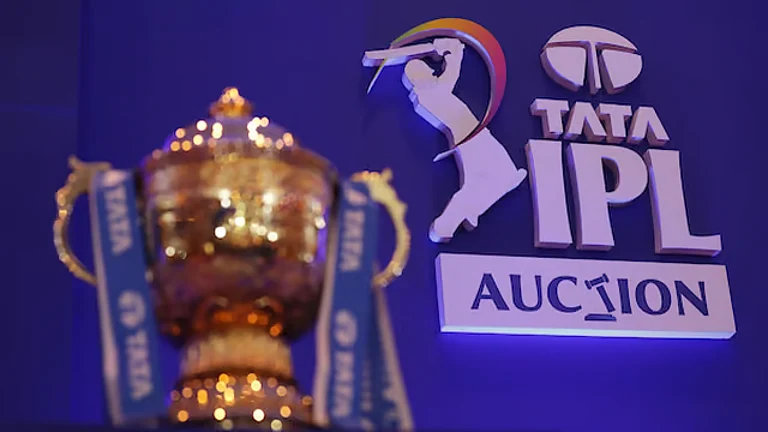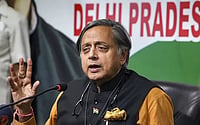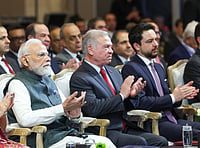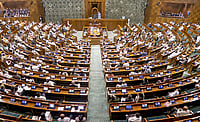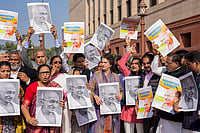THERE were happy winners; there are always happy winners. And yet, Sri Lanka's success had a romance to it. Don't they all, you may ask. But here, there was a story...and not the story you have read, about squabbles with Australia, the 'calling' of Muralitharan, the sledging, the decision not to play in Sri Lanka. No, I believe the romance began many years ago. I captained an MCC side to Ceylon in 1970 and a full England team in 1973. Both times, I was asked by the ICC to report on the possibility of a new Test country being born. I was all for Sri Lanka. There were enough clues to a bright future—the good grounds and the plans for stadia in Colombo and Kandy. In the wonderfully traditional schools in Colombo the most competitive cricket was played. Down south in the villages the game was captivating the young.
Two decades down the line, the world has seen Jayasuriya, the Most Valued Player of 1996, who learned his game on rough ground down south. And the stroke-play, too—did we not see superb demonstrations from Aravinda de Silva? And tenacity from Arjuna Ranatunga? Coolness under fire when Australians were dropping catches. Yes, there was high romance about the final.
What do I remember best? A conversation with Bob Woolmer, the South African coach-manager. I suggested that the very nature of 50-over cricket was tricky: that the best preparations could be thrown awry in 10 overs. "That's too negative. We don't think like that. I convert all thoughts to positive," he replied. "I know all about success—that's what I achieved at Warwickshire." It's dangerous for managers to talk about what they have achieved. You can't win matches from the dressing room verandah. Intikhab Alam and Ajit Wadekar didn't lose the World Cup for Pakistan and India. Alas, South Africa, so well-drilled, dropped catches, found the nerves getting at them. And Woolmer packed up his laptop and flew home with them.
Spin bowling was more of a feature than ever, from the skills of Shane Warne, Mushtaq Ahmed, Muralitharan and Anil Kumble to the craft of Jimmy Adams and Jayasuriya, left arm over the wicket, to Paul Adams, Pat Symcox.... Spin was a welcome guest at the Cup.
Was the tournament a success? Alas, the answer is 'not entirely'. My editor has asked me to compare with other years. I have seen all six. Let me issue the dissatisfactions. The Cup was organised amidst rumblings of cloak-and-dagger politics and covert financial dealings. The whispers may well have been untrue, but doubts grew about the power-base adopted by PILCOM and the sway of the individuals who allocated everything from tickets to television rights. There has never been such uncertainty about the pedigree of a World Cup.
Nor was the tournament visitor-led in the planning of travel or in the prize money. Teams and commentators found the circuitous air and car travel routes a disenchantment. Was there any strategy to attract foreign tourists and so create jobs and income for the country as a whole? If there was, it was well-concealed. Pakistan offered little entertainment—though there was apparently a poorly publicised arts festival running alongside the cricket. Presentation ceremonies, especially at the final, were in a shambles: the floorboards creaked with the lust of VIPs to get in on the act. There was a lot of 'getting in on the act'.
This may sound bitter, it's not meant to be. I'm devoted to cricket in the subcontinent but a Cup here is both an honour and a terrific chore. Communications are frustrating. The actual excitement of matches, however red-hot in India, was lukewarm in Pakistan and non-existent in Sri Lanka. Group B matches didn't attract a fervour, outside those involving Pakistan. There were far too many mismatches, the format was wrong, the qualifiers were uncompetitive. Only at the traditional centres of India did games ignite. The final should have been played in Calcutta.
Personally, I don't think the smaller countries will benefit from exposure to top competition. Sri Lanka didn't advance by being hammered in the World Cup. The Asia Cup and more regional competition hardened them. There's such a gap between the UAE, Holland and Kenya and the rest that it makes matches fruitless. West Indies were not beaten by Kenya. They didn't try an inch and beat themselves. The tall pace men looked as if they were bowling to fond nephews in the back garden. There will be 12 teams in Britain next time and so the same criticisms will apply, unless the format ensures a more vital early stage. There were 30 meaningless matches this time and that must be bad.
This will go down as a fragmented Cup, weakened by a format in which India never played against South Africa or England, nor Pakistan against Australia or the West Indies. No one, however, should leave a World Cup moaning. The umpires were immaculate and respected. The third umpire played a sane and necessary role. How many marginal decisions have gone the wrong way in past competitions? And, yes, the result. At Lahore, a little nation's hour came and the last memories will be of Aravinda's flashing blade and Arjuna's dagger turning slowly but surely in Australia's side.







